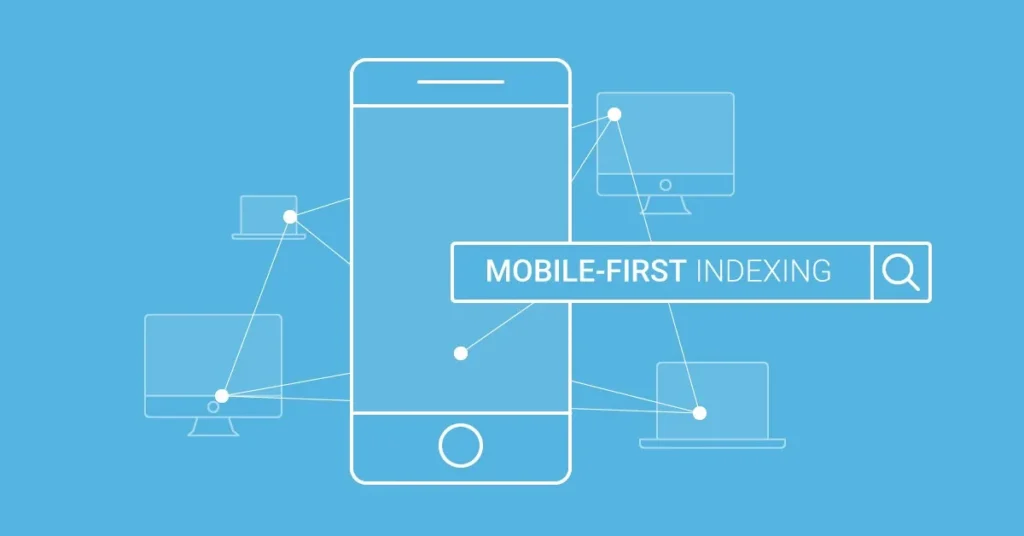
Mobile-first indexing means that Google predominantly uses the mobile version of the content for indexing and ranking. You can check a website’s mobile-friendliness with a free tool like SEO Checker or Google’s Mobile-Friendly Test Tool. Since the majority of users now access Google Search with a mobile device.
Googlebot primarily crawls and indexes pages with the smartphone agent going forward. The reverse used to be true, but with mobile growing to encompass the bulk of search traffic, Google decided to make a change.
Google’s algorithms use the mobile version of a site’s content to determine the search ranking and index it. This shift means that the mobile site should have the same important content as the desktop site.
Crawling is the process by which search engines send out bots, known as spiders or crawlers, to find new and updated content on the web. Google’s crawler is known as Googlebot.
Indexing is the process by which search engines process and store the information they find during crawling. When a page is indexed, its content is analyzed and added to the search engine’s database, making it available to be retrieved for relevant queries.
Ranking in the context of search engines refers to the process by which search engines determine the order in which web pages appear in search results for a given query. The goal is to provide the most relevant and useful results to users based on their search intent.

Google primarily uses the mobile version of the content for indexing and ranking. This means that the mobile version of a website is treated as the main version, even if users access the desktop version more frequently.
Google evaluates the content on the mobile version of the website to ensure it is equivalent to or better than the desktop version. This includes text, images, and other elements.
Googlebot, the web crawler, primarily uses the mobile user agent to crawl and index pages. This helps Google understand how the site performs on mobile devices.
The mobile version’s performance and content directly impact the site’s rankings. If the mobile site is slow, lacks content, or has poor usability, it can negatively affect the site’s overall ranking.
Optimizing for Google’s mobile-first indexing requires a focus on ensuring that the mobile version of your website provides a great user experience and contains the same valuable content as the desktop version. Here are some SEO best practices to help you succeed in a mobile-first world:
Align your mobile version with the desktop experience for optimal indexing and user satisfaction. When users navigate your website, whether on a smartphone or desktop, they should encounter a cohesive and intuitive interface. This consistency not only fosters optimal indexing by search engines but also contributes significantly to user satisfaction.
It eliminates confusion, enhances user engagement, and reinforces your brand identity. By prioritizing a unified experience, you create a user-friendly environment that adapts to different devices, reinforcing your website’s accessibility and appeal to a diverse audience. This, in turn, can positively impact SEO ranking, user retention, conversion rates, and overall online success.
Creating mobile-friendly copy is crucial for ensuring that your website is accessible and user-friendly on mobile devices. If you’ve ever stumbled upon a website lacking mobile optimization, the struggle becomes instantly apparent—constantly zooming in and out in a futile attempt to locate desired information, eventually leading to frustration and a swift exit due to its unusability and outdated design.
Avoid being the culprit of such user experience pitfalls. Instead, craft your website with mobile-friendly precision, employing shorter paragraphs, concise sentences, and legible fonts that enhance readability.
Optimizing images and videos on your website is not just about aesthetics; it’s a crucial step in enhancing user experience and search engine visibility. Ensuring the crawlability of these media elements allows search engines like Google to effectively index and understand them. Choosing supported formats ensures compatibility across devices and browsers, preventing loading issues. Adhering to Google’s guidelines in this regard aligns your content with industry best practices, enhancing your website’s credibility and discoverability.
Descriptive alt text not only aids accessibility but also provides valuable context for improved rankings. optimizing multimedia elements is a strategic move that goes beyond visual appeal, contributing to overall accessibility, search engine recognition, and user satisfaction.
Page speed optimization is crucial for improving user experience, reducing bounce rates, and boosting search engine rankings. Mobile users generally appreciate quicker loading times, and search engines tend to favor responsive sites in their rankings. Therefore, by focusing on page speed for mobile, you’re not just meeting user expectations but also potentially improving your website’s overall ranking.
Optimizing your page speed, especially for mobile users who might face challenges such as unstable connections and lower computing power. Focusing on page speed on mobile is a thoughtful approach that takes into account the varied conditions users might face, making sure your content remains easily accessible on mobile devices. Adapting to mobile-first indexing is crucial for a robust online presence.
You need to make sure your site is easy for Google to crawl and index, but rendering is also a crucial component of SEO, especially in a mobile-first world. Rendering refers to the process Googlebot uses to read the code of a website to digest the content and structure of a page.
Similar to how your web browser scans the HTML, CSS, and JavaScript of a website. And then displays the content as a page with images, text, and videos, Googlebot goes through a similar process for every page in its index. Rendering issues can impair Google’s ability to properly read and assess the contents of a website, making it more difficult to rank highly in organic search results. Just because a page is indexed doesn’t mean search engines can properly understand the page’s content.
Monitoring and testing are crucial components of optimizing your website for Google’s mobile-first indexing. Regularly assessing your website’s performance helps identify issues and ensures that your site provides the best possible experience for mobile users. Optimize for fast load times by compressing images, minifying CSS/JS, and leveraging browser caching. Ensure text is readable without zooming and that buttons and links are easy to tap.
Maintaining consistency in metadata, including titles and descriptions, it is important for a smooth narrative across different devices. It’s about creating a consistent message that works well on both desktop and mobile screens. Titles and descriptions serve as digital representatives, summarizing your content with a unified brand voice. Keywords play a role in improving discoverability and ensuring accurate content representation.
Regular audits and updates are essential to maintain relevance and effectiveness, ensuring that your metadata remains aligned with your SEO strategy and reflects the current state of your content. By achieving metadata harmony, you can improve your site’s search engine rankings, drive more organic traffic, and provide a seamless browsing experience for your audience.

Mobile-first indexing represents a significant shift in how search engines like Google prioritize and rank websites. With the majority of internet users now accessing the web via mobile devices, Google’s mobile-first approach prioritizes the mobile version of a website for indexing and ranking purposes. This means that the mobile version of a site is considered the primary source of content and relevance for search engine rankings, even for users accessing the site from desktop devices.
For SEO, this means that websites must prioritize mobile optimization to maintain or improve their search engine rankings. Factors such as mobile responsiveness, page speed, usability, and content relevance on mobile devices become even more critical. Websites that offer a seamless and optimized mobile experience are more likely to rank higher in search engine results, leading to increased visibility and organic traffic.

Talk to our experts who can guide you from choosing the right course, which will help to become successful in your Career.
Join our ONE free Class Now and Decide Yourself.

Unit of Global EduCareer Solutions.
B – 1/628, 2nd Floor, JanakPuri
Delhi – 110058
Opp. Metro Pillar No. 570
All Rights Reserved to GICT Since 2008

Unit of Global EduCareer Solutions.
B – 1/628, 2nd Floor, JanakPuri
Delhi – 110058
Opp. Metro Pillar No. 570
All Rights Reserved to GICT Since 2008